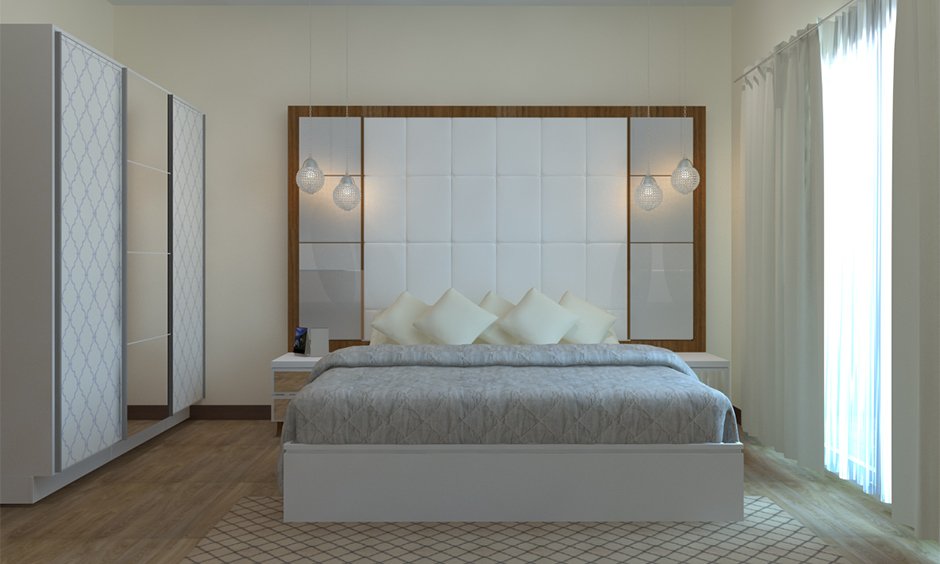Mirrors aren’t just practical they can add real style to your bedroom too.
They reflect light, make the space feel bigger, and bring a decorative touch. But placing a mirror in the right spot is key to making the most of it without throwing off the room’s balance.
In this guide, we’ll explore smart and stylish ways to position a mirror in your bedroom, helping it enhance both the look and functionality of your space.
Where to put mirror in bedroom?
In the bedroom, consider placing a mirror above the dresser, on a wall opposite a window to maximise light, or as part of a decorative feature above the bed.
Key Takeaways
- Mirrors should be placed in areas that enhance the room's size and light without disrupting the flow.
- Positioning a mirror near a natural light source can amplify sunlight and make the room feel brighter.
- Always consider the purpose of the mirror and the overall aesthetic when deciding on placement.
Consider the Room’s Layout

The first step in deciding where to place a mirror in your bedroom is to evaluate the room's layout.
Take a look at the flow of the space and how the furniture is arranged. Mirrors should complement the existing layout and not create a sense of disarray.
Best Practices
Opposite a Window: A mirror placed opposite a window reflects natural light, making the room feel brighter and more open. This is especially useful in smaller bedrooms or rooms with limited windows.
Avoid Reflecting the Bed: While it's tempting to place a mirror above or near the bed, it’s important to consider how this placement might impact the room's energy. Some people find that mirrors facing the bed can disrupt sleep, while others like the reflection for aesthetic reasons.
Mirror Placement for Functionality
Mirrors can serve a variety of functions in a bedroom, from checking your outfit to adding depth to the room. Consider how you want the mirror to function and where it will be most useful.
Common Functional Uses
Full-Length Mirrors: These are perfect for checking your outfit or getting a full view before leaving the house. Place them where you can easily see your reflection from head to toe, typically near a wardrobe or in a corner.
Vanity Mirrors: If you have a vanity, a mirror above it is ideal. It should be at eye level and placed in such a way that it doesn't cast harsh light but instead reflects the softer light in the room.
Placement Based on Bedroom Size
The size of the bedroom also plays a significant role in where to place a mirror.
In smaller rooms, mirrors can be used to make the space feel larger and more open, while in larger rooms, mirrors can add interest without overwhelming the space.
Best Tips for Small Rooms
Wall-Mounted Mirrors: In small bedrooms, wall-mounted mirrors can save space while still providing the reflection you need. Consider placing them above a bedside table or near the door for added convenience.
Mirrors on Closet Doors: If you’re tight on space, using the closet doors as a reflective surface is a great way to incorporate a mirror without taking up any floor space.
For Larger Rooms
Statement Mirrors: Large, decorative mirrors can serve as a focal point and balance out the space.
Consider placing them above a console table, on a feature wall, or as part of your bedroom's decor.
The Best Locations for Mirrors

Depending on your bedroom’s layout and size, here are some ideal places to position mirrors to enhance both function and style:
Above the Bed: A mirror above the bed can create a striking visual effect. This position works well with a large mirror or a cluster of smaller mirrors. However, ensure it’s securely mounted and not too overwhelming for the space.
Near the Door: Placing a mirror near the door makes it convenient for last-minute checks before heading out. It also helps create the illusion of space by reflecting the entire room.
In the Corner: For a unique and stylish placement, try placing a large mirror in the corner of the room. This adds depth to the room and makes the space feel larger.
On a Feature Wall: A mirror can be an excellent addition to a feature wall. Consider placing a large mirror as the focal point of the room, surrounded by other decorative elements, such as artwork or shelves.
Aesthetic Considerations
Mirrors not only serve a functional purpose but can also be key decorative elements in the bedroom.
When deciding where to place a mirror, consider its style and how it complements the overall aesthetic of the room.
Frequently Asked Questions
1. Can I place a mirror across from my bed?
Placing a mirror across from your bed is a matter of personal preference. While it can reflect light and create a sense of space, some people find it disruptive for sleep. If you're unsure, consider experimenting with different placements to see what works best for you.
2. What type of mirror is best for a small bedroom?
In a small bedroom, full-length mirrors mounted on the wall or sliding mirrors on closet doors can maximise space. Avoid large mirrors that may overwhelm the room’s size.
3. How can I make my bedroom appear bigger with mirrors?
To make your bedroom appear larger, place mirrors opposite windows to reflect natural light, or use large statement mirrors on walls to create the illusion of more space.
Conclusion
Choosing the right placement for a mirror in your bedroom can have a significant impact on both the functionality and aesthetic of the room.
By understanding the benefits of mirrors and experimenting with different positions, you can enhance the natural light, create the illusion of more space, and add a stylish touch to your bedroom.
Whether you opt for a large statement piece or a simple wall-mounted mirror, the key is to ensure that it complements the overall layout and feel of the room.

